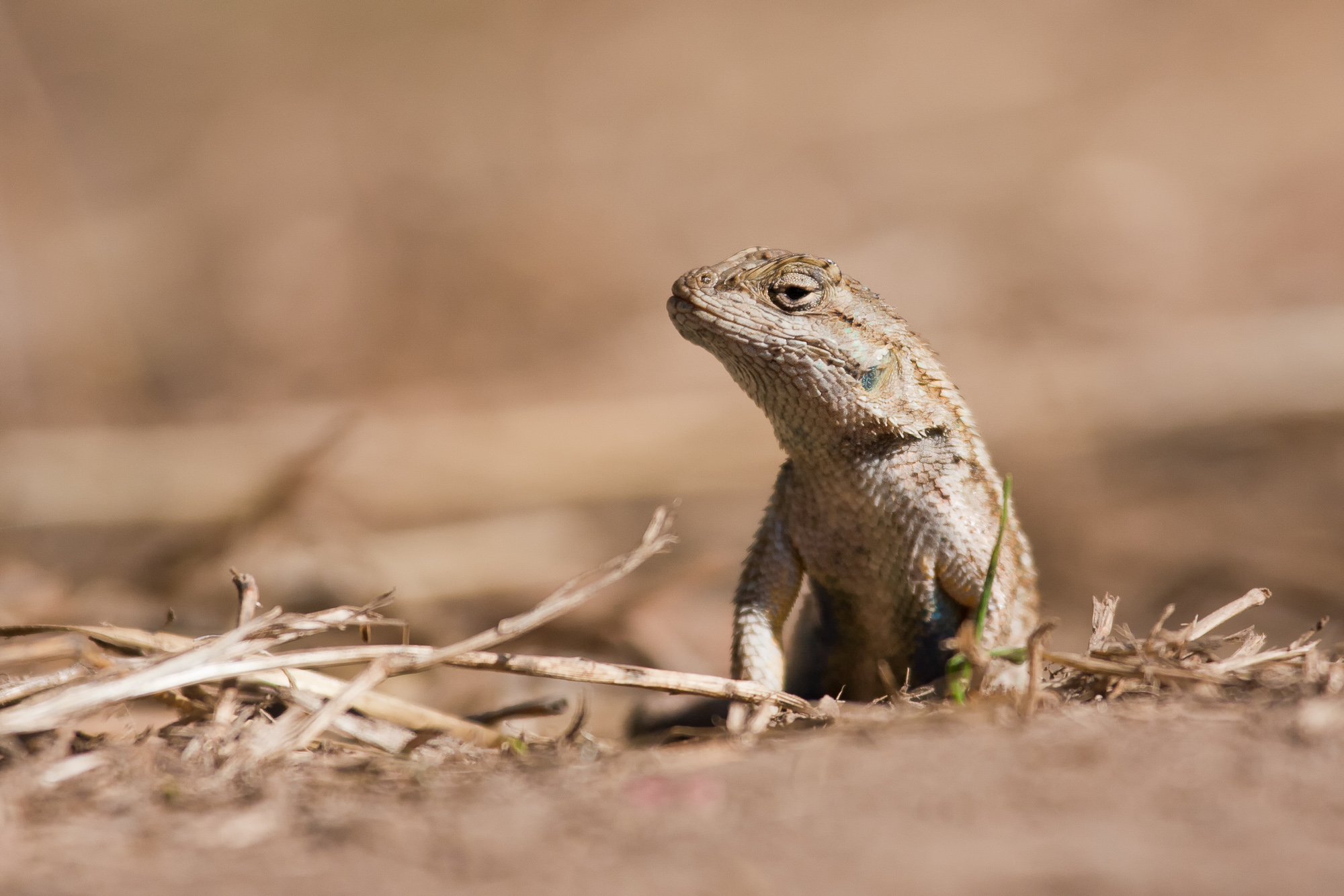
It’s long been said that the eyes are the windows to the soul. That has never been more true than with wildlife photography. Capturing the subject’s eye helps the viewer connect with the animal, and brings a kind of depth to the photograph. Books such as Frans Lanting’s fantastic Eye To Eye are dedicated to this connection between the viewer and the subject. Achieving this kind of connection with your subject is something to keep in mind when out in the field photographing.
The photo above features a western fence lizard – very common in local open space preserves and urban green space. Recently I was out walking with my wife, and I was carrying (as I often do) my 100 – 400mm zoom lens. We came across this lizard, and given that the birds were not very active this time of day, I wanted to capture at least something fun with my camera. The lizard was only about 5 inches long, tip to tail. I’ve seen about a million straight shots of lizards from above, and knew I could easily fire off a few of my own – boring! That angle shows me nothing about the lizard – it might as well be a rubber toy. I wanted to get a sense for what the lizard might be thinking as he sat out in the hot sun. In order to do that, I had to get down to eye level.
Although the ground was covered in thick dust, I proceeded to get down on my belly, feet behind me (sometimes one has to sacrifice for one’s art!). I put my camera right onto the ground, to get as low as possible. Starting out at a distance with which the lizard seemed comfortable, I slowly crawled forward, taking pictures along the way. Once I got closer than the lens’s minimum focusing distance, I knew that was as large as I could make the lizard in the frame. I usually carry a set of Kenko extension tubes with me, but this time I didn’t have them, so that was as close as I was getting. The lizard kept me in his view the entire time, turning his head back and forth. After shooting for a while, I realized this lizard wasn’t planning on going anywhere soon. So I slowly backed away so as not to disturb him, and went on my way.
By getting eye level to a creature we don’t normally see that way, I was able to create a photo that does more than just document. There is a subtle connection made between the subject and the audience, which when achieved, can go a long way toward the success of a photograph.
